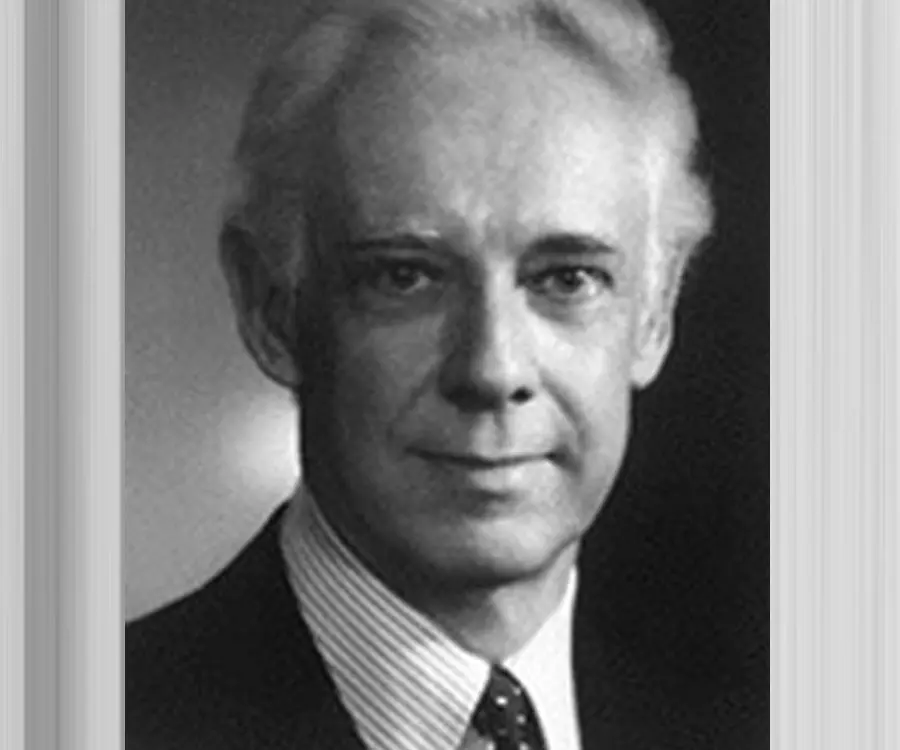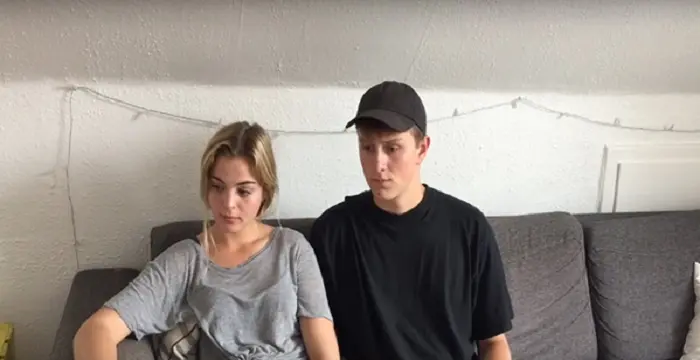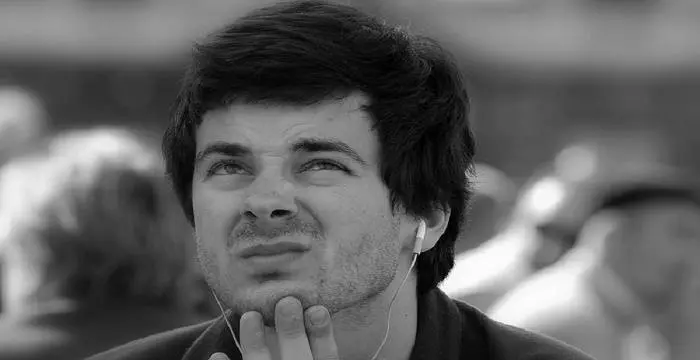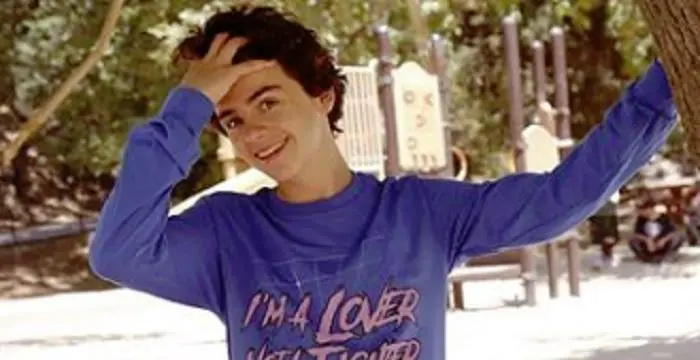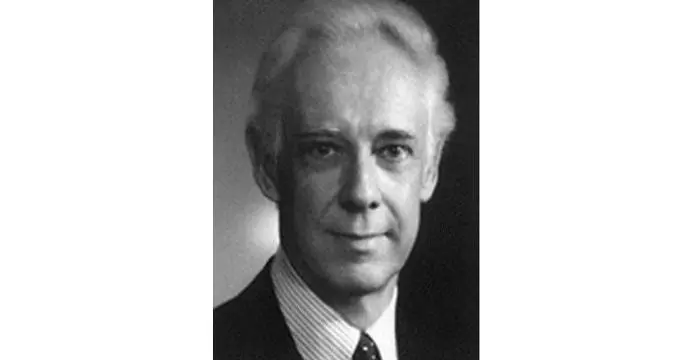
Stanford Moore - Scientists, Family and Facts
Stanford Moore's Personal Details
Stanford Moore was an American biochemist who was jointly awarded the ‘Nobel Prize in Chemistry’ in 1972
| Information | Detail |
|---|---|
| Birthday | September 4, 1913 |
| Died on | August 23, 1982 |
| Nationality | American |
| Famous | Scientists, Biochemists |
| Universities |
|
| Birth Place | Chicago, Illinois, US |
| Gender | Male |
| Father | John Howard Moore |
| Mother | Ruth Moore |
| Sun Sign | Virgo |
| Born in | Chicago, Illinois, US |
| Famous as | Biochemist |
| Died at Age | 68 |
// Famous Biochemists
Robert Huber
Robert Huber is a German biochemist and Nobel Laureate. Check out this biography to know about his childhood, life, achievements, works & timeline.
Charles Best
Charles Best was a great scientist and a renowned physiologist who is remembered for being the co-discoverer of insulin. Read this biography to learn about his profile, childhood, life and timeline.
Isaac Asimov
Isaac Asimov was an American professor of biochemistry and a renowned author of science fiction and popular science books. Read this biography to know more about his life.
Stanford Moore's photo
Who is Stanford Moore?
Stanford Moore was an American biochemist who was jointly awarded the ‘Nobel Prize in Chemistry’ in 1972 along with two other American biochemists, William Howard Stein and Christian B. Anfinsen for his contribution in the research work at ‘Rockefeller University’ regarding the structure of ribonuclease, a type of nuclease, and also for comprehending association of the ribonuclease molecule’s chemical structure with that of its catalytic activity. Moore and Stein collaborated to discover new techniques of chromatography, a method of separating a mixture, for applying to analyse amino acids and small peptides procured through protein hydrolysis. The first automatic amino-acid analyzer that highly facilitated the study of amino acid sequences of proteins was developed by the duo. The first analysis of the complete chemical structure of the enzyme ribonuclease was made by them using the new device. Moore spent most of his professional career at the ‘Rockefeller University’ except a stint with the US government during the ‘Second World War’. In 1954 the Faculty of Medicine of the ‘University of Brussels’ conferred upon him ‘Docteur honoris causa’. He received several awards along with fellow biochemist William H. Stein which include the American Chemical Society Award in Chromatography and Electrophoresis in 1964; the ‘Linderstrom-Lang Medal’ from the ‘Carlsberg Research Center’ in 1972; and the ‘Richards Medal’ of the ‘American Chemical Society’ in 1972.
// Famous Scientists
Juliane Koepcke
Juliane Koepcke is a German-Peruvian biologist, who was the lone survivor among the 92 passengers and crew of the ill-fated LANSA Flight 508 that crashed in the Peruvian rainforest on 24 December 1971. Know more about her life in this biography.
Henry Cavendish
Henry Cavendish was a theoretical chemist and physicist, renowned for discovery of hydrogen and calculation of the mass of earth. To know more about his childhood, profile, timeline and career read on
Konstantin Tsiolkovsky
Konstantin Tsiolkovsky was a Russian rocket scientist and a pioneer of astronautics. This biography provides detailed information about his childhood, family, personal life, career, achievements, etc.
Childhood & Early Life
He was born on September 4, 1913, in Chicago, Illinois, to John Howard Moore and his wife Ruth Moore. He was raised in Nashville, Tennessee, where his father was a faculty member of the ‘Vanderbilt University Law School’.
He attended ‘Peabody Demonstration School’ (at present called the ‘University School of Nashville’), a high school in Nashville which was managed by the ‘George Peabody College for Teachers’.
Thereafter he enrolled at the ‘Vanderbilt University’ from where he graduated summa cum laude (meaning: "with highest honor") with chemistry major in 1935. He was a Phi Kappa Sigma member at the university. He was recommended a Wisconsin Alumni Research Foundation Fellowship by the faculty following which he joined the ‘University of Wisconsin’ for his postgraduate doctoral studies.
In 1938 he earned a PhD in organic chemistry from the ‘University of Wisconsin’. He conducted his thesis in biochemistry under the guidance of American biochemist Karl Paul Gerhard Link in the latter’s laboratory.
He learned the microanalytical procedures developed by Slovenian-Austrian chemist and physician Fritz Pregl for analysing C, H, and N from Link. This lesson imparted by Link proved to be extremely valuable for him in his future scientific works related to quantitative analysis of proteins.
Career
In 1939 he joined the laboratory of Max Bergmann, a friend of Link, at the ‘Rockefeller Institute for Medical Research’ in New York. This institute of international repute was renowned for its investigations on the chemistry of enzymes and proteins.
His research work with a group of talented chemists, which included William H. Stein, in the lab of Bergmann, got interrupted after three years in 1942 when he was enlisted as a technical aid in the ‘National Defense Research Council’ in Washington during the ‘Second World war’. He served the position till 1945. He worked in the academic and industrial chemical projects that were managed by the ‘Office of Scientific Research Development’ and later served the ‘Operational Research Section’ linked with the headquarters of the US armed forces in Hawaii.
Post war he returned to the Rockefeller Institute accepting offer of the then Director Herbert Gasser who provided him and William H. Stein with the liberty and space of conducting research work of their line of interest.
He applied and also developed new uses of chromatography to determine the peptides and amino acids present in biological fluids and proteins. He evolved a procedure of photometric ninhydrin for applying in amino acids chromatography.
Moore and Stein became successful in separating out individual amino acids from a synthetic mixture, a work that was featured in the peer-reviewed scientific journal ‘Journal of Biological Chemistry’. The duo applied their procedures to analyse the structures of bovine serum albumin and β-lactoglobulin.
He served as Chairman of the Panel on Proteins of the Committee on the Growth of the National Research Council from 1947 to 1949.
In 1950 he remained a scholar of the Francqui Chair at the ‘University of Brussels’.
From 1950 to 1951 he remained a scholar of chemistry at the ‘University of Cambridge’ and thereafter remained a scholar of biochemistry for a year at the ‘Rockefeller Institute for Medical Research’.
He remained in the Editorial Board of ‘Journal of Biological Chemistry’ from 1950 to 1960.
In 1952 he was inducted by the ‘Rockefeller Institute for Medical Research’ as a Professor of Biochemistry, a position he held till 1965.
From 1953 to 1957 he served as the Secretary of the Commission on Proteins of the International Union of Pure and Applied Chemistry.
In 1956 he became the Treasurer of the ‘American Society for Biochemistry and Molecular Biology’ and retained the post till 1959. In 1966 he served as President of the society.
In 1958 he along with Stein developed the first automatic amino-acid analyzer that highly facilitated the analysis of amino acid sequences of proteins and this development also led to determine the composition of the enzyme ribonuclease.
In 1959 the duo declared the first analysis of the entire amino acid sequence of ribonuclease. The two biochemists also delved into examining the composition, function and association of several other proteins like pancreatic ribonuclease, ribonuclease T1, pepsin, chymotrypsin, pancreatic deoxyribonuclease and streptococcal proteinase.
In 1964 Moore became the Chairman of Organizing Committee for the ‘International Congress of Biochemistry’.
From 1965 to 1982 he served as a Professor of Biochemistry at the ‘Rockefeller University’.
He served the ‘Vanderbilt University School of Medicine’ in 1968 as a Visiting Professor of Health Sciences.
In 1970 he held the position of President of the ‘Federation of American Societies for Experimental Biology’.
He was member of ‘American Academy of Arts and Sciences’, ‘National Academy of Sciences’ and ‘Harvey Society’ and foreign member of ‘Belgian Biochemical Society’ and ‘Belgian Royal Academy of Medicine’.
Personal Life & Legacy
Moore remained unmarried throughout his life.
He was a victim of the invariably fatal neurological disease amyotrophic lateral sclerosis (ALS), commonly called the Lou Gehrig's disease that attack the neurons which control the voluntary muscles thus causing muscle degeneration. This resulted in his gradual immovability that left him mostly in-house during the later stage of his life. He finally succumbed to the disease on August 23, 1982, in New York City.
Moore handed out his property to the ‘Rockefeller University’ with instructions "to be used as endowment toward the salary or research expenses or both of an investigator in the field of biochemistry".
Trivia
In the early 1960s he served a federal grand jury that was investigating the Cosa Nostra, a criminal syndicate.
// Famous American peoples
Wentworth Miller
Wentworth Miller is an American actor and screenwriter who achieved recognition for his role in the TV series ‘Prison Break’.
Jason Simpson
Jason Simpson is the son of former NFL running back, broadcaster and actor O. J. Simpson. Check out this biography to know about his childhood, family, life, and little known facts about him.
Melissa Brim
Melissa Brim is the ex-girlfriend of former professional boxer Floyd Mayweather Jr. Check out this biography to know about her birthday, childhood, family life, achievements and fun facts about her.
Stanford Moore biography timelines
- // 4th Sep 1913He was born on September 4, 1913, in Chicago, Illinois, to John Howard Moore and his wife Ruth Moore. He was raised in Nashville, Tennessee, where his father was a faculty member of the ‘Vanderbilt University Law School’.
- // 1935Thereafter he enrolled at the ‘Vanderbilt University’ from where he graduated summa cum laude (meaning: "with highest honor") with chemistry major in 1935. He was a Phi Kappa Sigma member at the university. He was recommended a Wisconsin Alumni Research Foundation Fellowship by the faculty following which he joined the ‘University of Wisconsin’ for his postgraduate doctoral studies.
- // 1938In 1938 he earned a PhD in organic chemistry from the ‘University of Wisconsin’. He conducted his thesis in biochemistry under the guidance of American biochemist Karl Paul Gerhard Link in the latter’s laboratory.
- // 1939In 1939 he joined the laboratory of Max Bergmann, a friend of Link, at the ‘Rockefeller Institute for Medical Research’ in New York. This institute of international repute was renowned for its investigations on the chemistry of enzymes and proteins.
- // 1942 To 1945His research work with a group of talented chemists, which included William H. Stein, in the lab of Bergmann, got interrupted after three years in 1942 when he was enlisted as a technical aid in the ‘National Defense Research Council’ in Washington during the ‘Second World war’. He served the position till 1945. He worked in the academic and industrial chemical projects that were managed by the ‘Office of Scientific Research Development’ and later served the ‘Operational Research Section’ linked with the headquarters of the US armed forces in Hawaii.
- // 1947 To 1949He served as Chairman of the Panel on Proteins of the Committee on the Growth of the National Research Council from 1947 to 1949.
- // 1950In 1950 he remained a scholar of the Francqui Chair at the ‘University of Brussels’.
- // 1950 To 1951From 1950 to 1951 he remained a scholar of chemistry at the ‘University of Cambridge’ and thereafter remained a scholar of biochemistry for a year at the ‘Rockefeller Institute for Medical Research’.
- // 1950 To 1960He remained in the Editorial Board of ‘Journal of Biological Chemistry’ from 1950 to 1960.
- // 1952 To 1965In 1952 he was inducted by the ‘Rockefeller Institute for Medical Research’ as a Professor of Biochemistry, a position he held till 1965.
- // 1953 To 1957From 1953 to 1957 he served as the Secretary of the Commission on Proteins of the International Union of Pure and Applied Chemistry.
- // 1958In 1958 he along with Stein developed the first automatic amino-acid analyzer that highly facilitated the analysis of amino acid sequences of proteins and this development also led to determine the composition of the enzyme ribonuclease.
- // 1959In 1959 the duo declared the first analysis of the entire amino acid sequence of ribonuclease. The two biochemists also delved into examining the composition, function and association of several other proteins like pancreatic ribonuclease, ribonuclease T1, pepsin, chymotrypsin, pancreatic deoxyribonuclease and streptococcal proteinase.
- // 1964In 1964 Moore became the Chairman of Organizing Committee for the ‘International Congress of Biochemistry’.
- // 1965 To 1982From 1965 to 1982 he served as a Professor of Biochemistry at the ‘Rockefeller University’.
- // 1968He served the ‘Vanderbilt University School of Medicine’ in 1968 as a Visiting Professor of Health Sciences.
- // 1970In 1970 he held the position of President of the ‘Federation of American Societies for Experimental Biology’.
- // 23rd Aug 1982He was a victim of the invariably fatal neurological disease amyotrophic lateral sclerosis (ALS), commonly called the Lou Gehrig's disease that attack the neurons which control the voluntary muscles thus causing muscle degeneration. This resulted in his gradual immovability that left him mostly in-house during the later stage of his life. He finally succumbed to the disease on August 23, 1982, in New York City.
// Famous Virgo Celebrities peoples
Temple Grandin
Temple Grandin is a well-known American writer, autistic activist and animal expert. This biography profiles her childhood, life, achievements, career and timeline
Alex Holtti
Check out all that you wanted to know about Alex Holtti, the famous Danish Viner & YouTuber; his birthday, his family and personal life, his girlfriends, fun trivia facts and more.
Benjamin Atkinson
Benjamin Atkinson is the son of the world-renowned British actor and comedian, Rowan Atkinson. Check out this biography to know about his childhood, family, personal life, including his age, birthday, etc.
Jack Dylan Grazer
Jack Dylan Grazer is an American actor known mainly for his performance in the movie version of ‘Stephen King’s novel ‘It.’ Check out this biography to know about his childhood, family, personal life, birthday, etc.
Ted Williams
Ted Williams was an American baseball player. Read this biography to learn more about his profile, childhood, life and timeline.
Mia Diaz
All about American dancer and actor Mia Diaz, including her age, family life, birthday, boyfriends, net worth, and some fun facts.
Stanford Moore's FAQ
What is Stanford Moore birthday?
Stanford Moore was born at 1913-09-04
When was Stanford Moore died?
Stanford Moore was died at 1982-08-23
Where was Stanford Moore died?
Stanford Moore was died in New York City, US
Which age was Stanford Moore died?
Stanford Moore was died at age 68
Where is Stanford Moore's birth place?
Stanford Moore was born in Chicago, Illinois, US
What is Stanford Moore nationalities?
Stanford Moore's nationalities is American
What was Stanford Moore universities?
Stanford Moore studied at Vanderbilt University, University of Wisconsin–Madison
Who is Stanford Moore's father?
Stanford Moore's father is John Howard Moore
Who is Stanford Moore's mother?
Stanford Moore's mother is Ruth Moore
What is Stanford Moore's sun sign?
Stanford Moore is Virgo
How famous is Stanford Moore?
Stanford Moore is famouse as Biochemist



